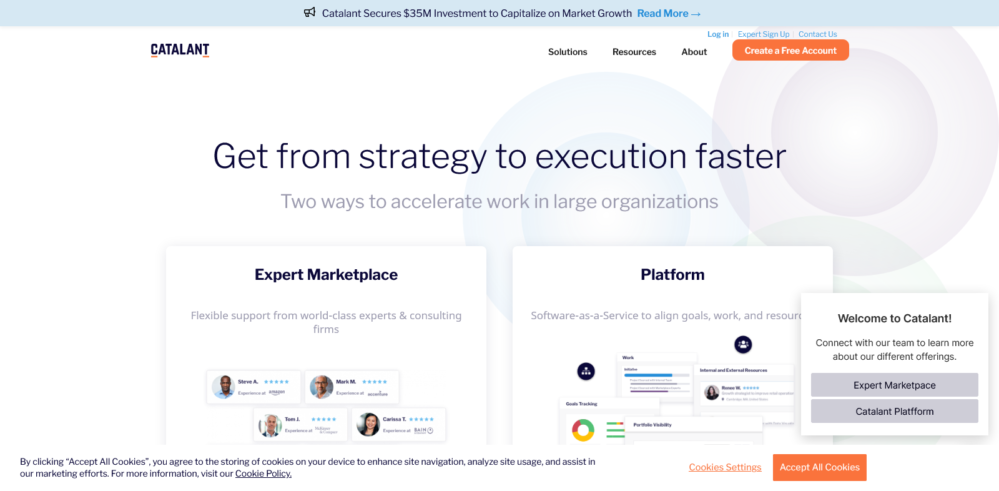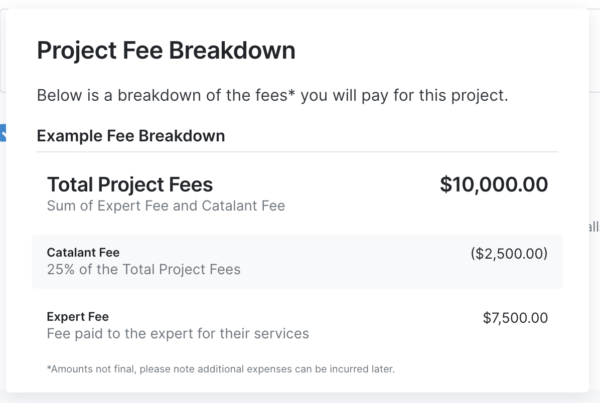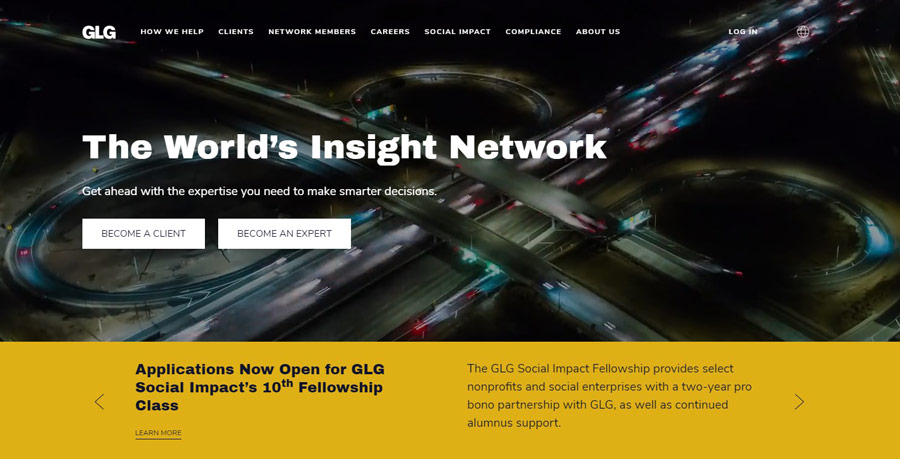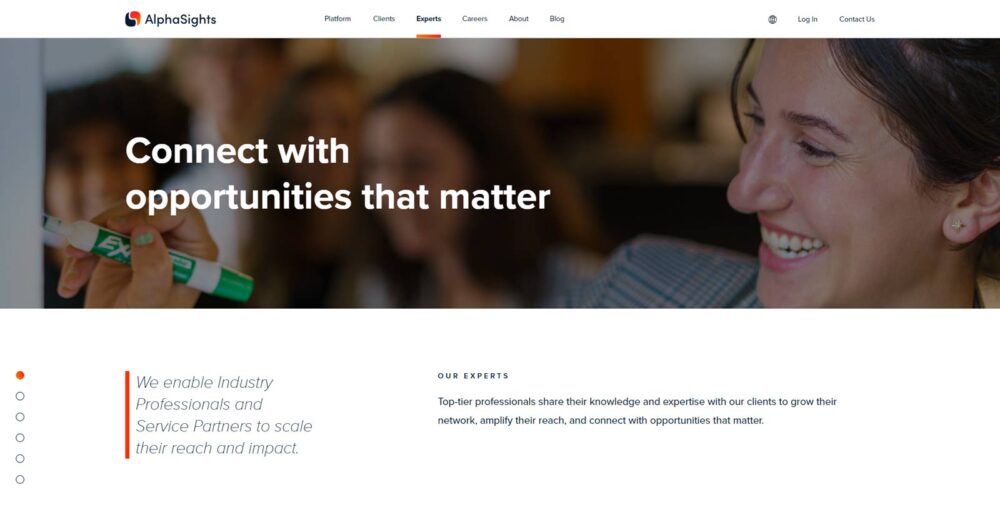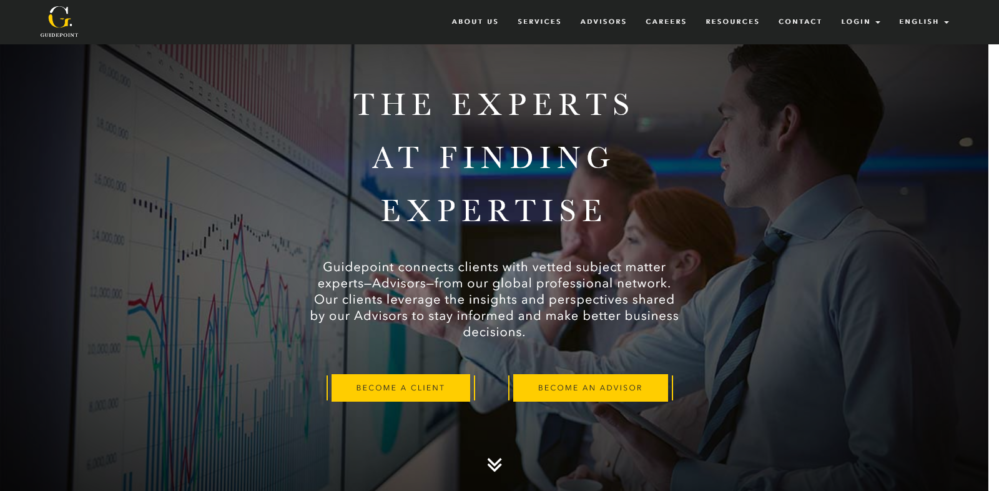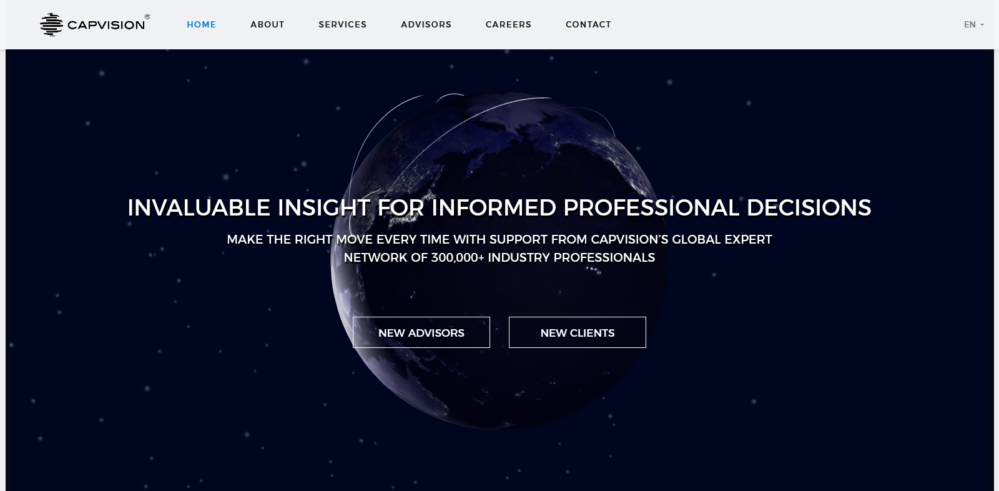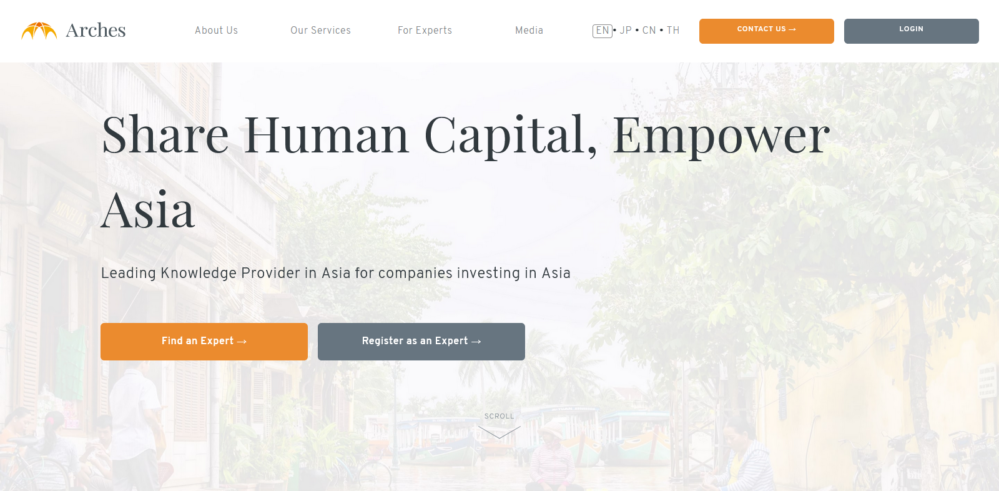Catalant Review
Catalant is a marketplace connecting consultants with clients. Potential consultants can register through the website, and if approved, they will get access to review and apply for live projects on the portal. In this review, we’ve taken a closer look at what Catalant has to offer experts in terms of shorter and longer-term consulting projects.
Catalan’s Knowledge Marketplace
Through the marketplace, clients post projects and request conversations with experts. Experts can view publicly-posted projects, browse new opportunities, and reply to requests through the dashboard. Interested Experts can also invite themselves to projects by sending an initial expression of interest.
“Hire consultants with years of experience at top consulting firms and Fortune 500 enterprises — even those with prior experience at your firm. Our Experts have the functional, industry, and operational expertise to execute strategic projects with precision.” Catalant
Registering as an expert
New users seeking to establish their consulting practice through Catalant will be subject to a verification process designed to evaluate their background and align their subject matter expertise with the demands of Catalant’s clients. The process takes 2-5 business days to complete. To be considered for the Expert Marketplace, applicants must possess relevant professional experience, industry knowledge, and expertise.
Successful candidates typically have 2-3 years of management consulting experience, 5+ years of industry experience, an advanced degree, and/or have established their own consulting practice as a formal business entity.
One common trait shared by all Experts, regardless of experience or industry knowledge, is their drive to sell their professional services and build their practice. Once a candidate’s profile is verified, they can begin building their practice by searching for new opportunities in Catalant’s project database and marketing their profile to potential clients on the Expert Marketplace.
Changes to a user’s profile can only be made after review.
If an applicant does not pass the verification process, they are encouraged to reapply once they have satisfied more of the criteria outlined in this article. Catalant continuously reviews profiles to ensure its high standards are met.
Deep experience experts
Afterwards, experts can follow up on the client’s message. A successful collaboration can lead to a high-quality result. Unlike other marketplaces, Catalant is unique in its structure. It matches paying clients with consultants with deep experience. A project may include developing a positioning strategy for a brand, developing customer journey maps, or creating a marketing budget. Freelancers can set their earnings expectations and timetable and offer a la carte services, such as crisis management consulting.
Knowledge on demand
Companies are forced to reinvent themselves in an increasingly competitive age and a skilled labor economy. Catalant customers use its marketplace to hire independent consultants to implement agile strategies. But how does Catalant differentiate itself from competitors? Companies can easily access a range of skills and services by offering more than one option. And Catalant customers can expect to receive exceptional service. And while the business world has changed, there’s still a need for elegant solutions to meet the demands of today’s global marketplace.
How will I get paid?
Payoneer is the primary payment processor for projects in the Catalant Expert Marketplace. Payoneer is a leading global payment processor and platform for independent professionals and firms around the world. Experts and Firms must have a Payoneer account associated with their Catalant account to receive payments.
How does the Catalant Fee work?
Catalant retains a fee only when a Client engages an Expert for a project. This fee (the “Catalant Fee”) ranges between 20-30% of the Total Project Fees (equivalent to a 25-43% markup on the Expert Fee) and is determined by the contractual terms we’ve pre-negotiated with the Client.
Catalant advises that experts should treat the fee as a markup on their take-home earnings and bid at their market rate for a project. While the Catalant Fee percentage is not open for negotiation on a given project, Experts and Clients are encouraged to communicate with each other to arrive at a scope and price that reflect both an Expert’s market value as well as a Client’s budget considerations.
The good thing is that Catalant is transparent when it comes to displaying the fees upfront and in the fee calculator provided when submitting a proposal (example below).
The 25% fee might seem high, but in comparison to what other expert networks like GLG and Alphasights charge clients, this fee is actually very low. While a traditional expert network might charge the client $1,000 per hour and pay the expert $250, Catalant will instead pay the expert $750 and take $250 as their fee. However, it’s important to keep in mind that projects coming through the Catalant marketplace are longer-term projects worth more than the traditional one-hour ad-hoc expert call.
From January 1, 2023, payments all new projects via Catalant’s Expert Marketplace will be processed with Net-60-day payment terms to better align them to when Catalant is paid by clients, which is slightly more than every 60 days. Transfers for both “Your Fees” and “Project Expenses” will be distributed, via Payoneer, 60 days following on-platform Client approval. These payment terms are significantly worse if compared with standard expert networks. Then again, Catalant is not a standard expert network, but rather a marketplace of longer-term consulting jobs.
How do I get accepted on Catalan’s network?
Catalant’s proprietary accreditation algorithm analyzes expert profiles; only the highest-rated experts and firms are accredited and receive automatic bidding access to projects. Catalant’s Network Strategy team monitors expert account creation.
It engages in pre-screening calls to gain a more detailed understanding of the most promising experts’ expertise, availability, and interest. As part of Catalant’s proprietary matching, an algorithm recommends the best experts or firms to perform a particular project. A Catalant account manager then screens the results to ensure the ideal fit with client expectations. Clients may conduct several rounds of interviews and request work product or client feedback from previous projects.
Examples of projects on the Catalant Marketplace:
- Market Research: Collection or analysis of information about target markets or customers, typically to inform strategic decisions such as investment of resources, product development, acquisitions, and market entry or expansion. Examples include projects such as competitive analysis, landscape assessment, market sizing, and concept testing.
- Operations & Process Improvement: Focused on the activities, tools, systems, and technology and the optimization of these within a company for efficiency, cost, and quality. Examples include projects such as process automation, value stream mapping, Lean manufacturing, customer service operations, and workflow optimization.
- Marketing and Communications: Activities driving the promotion or awareness of a business, product, service, or brand and engaging prospective and existing customers. Examples include projects such as brand marketing, public relations, customer experience, search engine optimization, content marketing, advertising, and net promoter scoring.
- Human Resources & Organization: Involving the processes, policies, tools, and structures surrounding the people in a company. Examples include projects such as organizational design, change management, benefits and compensation, talent acquisition, employee engagement, training, or coaching.
- Regulatory & Compliance: Related to the rules, standards, or policies that regulate business activities broadly or within a specific industry. Examples include projects such as quality assurance and control, regulatory affairs, submissions, medical writing, corporate sustainability reporting, drug, and food safety, licensing, new regulation readiness, and preparedness.
- Data Analytics & Business Analysis: Generating insights from data to inform business decisions. Examples include projects such as data science, Excel, data visualization, business intelligence, cognitive computing, data engineering, and Big Data.
- Project Management: Activities associated with the planning, oversight, and close-out of an initiative to ensure the completion of work according to specific goals, timelines, costs, and quality. Examples include projects such as stakeholder management, project plan development, project resources alignment, project progress reporting, and project risk management.
- Corporate Strategy: Broad category of activities related to defining a company’s goals, developing the overarching strategy to support the goals, and the high-level initiatives to achieve them. Examples include projects such as business planning, go-to-market strategy, mergers & acquisitions, growth strategy, new market entry, shareholder engagement, corporate portfolio management, and benchmarking.
- Research & Development: Activities surrounding the analysis, preparation, experimentation, and innovation that enable the creation of new products or the improvement of existing products at a company. Examples include projects such as R&D innovation, innovation strategy, R&D analyses, new product business cases, R&D effectiveness, and clinical development support.
The matching process
For Catalant to be able to match you with projects, you can select the types of projects and industries you would like to cover as a consultant. While this helps narrow down to more relevant opportunities, I was still exposed to more than 100 potential projects.
Sifting through all of these projects one by one takes time, so what makes sense is to search using relevant keywords for your industry. You can also apply additional filters such as location, project category, industry and status. However, the fact remains that it takes quite a lot of time to identify projects which are great matches. Especially if you’re an expert in a very specific field.
I would personally prefer a more targeted approach. Instead of having access to 100+ projects, it would be much better to be exposed to one single relevant project. After all, your time is limited as a consultant and you want to be as productive as possible.
While the concept of creating a marketplace for consultants and clients is great, the portal still needs to be refined. Especially when it comes to creating a more efficient matching process.
The benefits of joining a marketplace
Online marketplaces have revolutionized the way interdependent groups interact with each other. Popular marketplace businesses like Amazon, eBay, and Uber have brought modernization to age-old physical bazaars, auction houses, and taxi services. Similarly, on-demand talent marketplaces, such as Catalant, have given clients access to a global ecosystem of independent consultants and firms.
Experts who join Catalant can develop their own marketing and sales strategies to excel in this environment. The key is to focus on what they know best and take into account the prospective client’s buyer journey.
Through Catalant’s platform, clients have the power to connect with an extensive network of skilled professionals, giving them the opportunity to choose from the best possible candidates for their specific needs. Meanwhile, consultants and firms can leverage Catalant’s marketplace to market their services, develop their brand, and build a steady stream of clientele.
By understanding their areas of expertise and the buyer’s journey, experts on Catalant can effectively position themselves and their services to meet the client’s needs. As a result, the platform is becoming a preferred destination for clients seeking specialized talent and for professionals looking to take their businesses to the next level.

